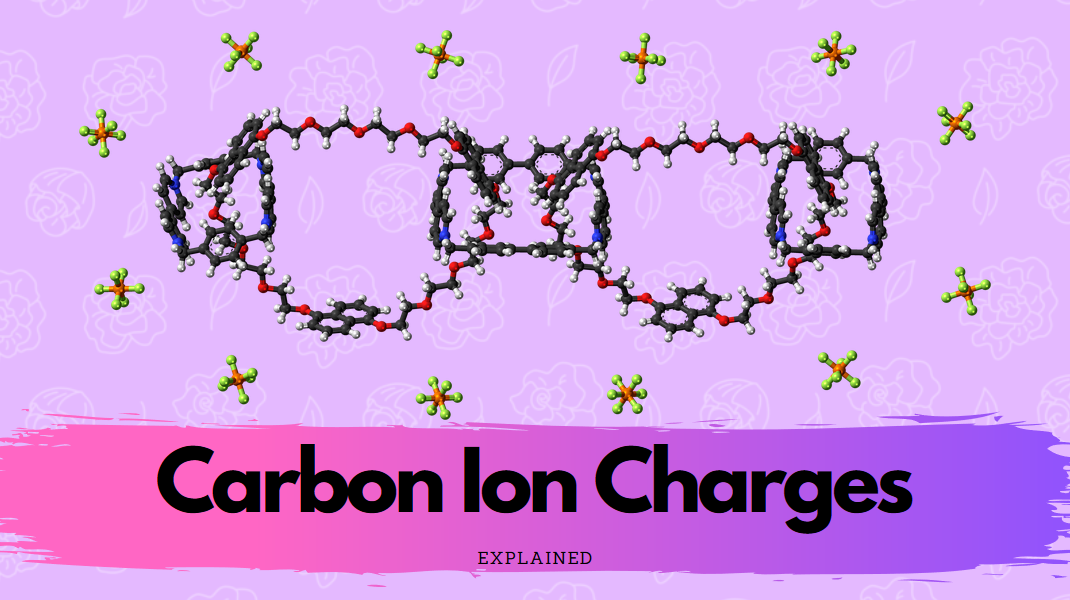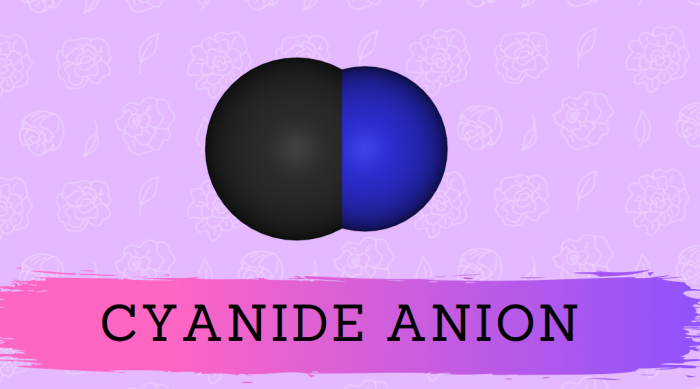
Carbon (C) is a very flexible element and can form a number of different ions. Carbon has an outer shell consisting of 4 valence electrons. This means it can either add 4 electrons to gain a full outer shell or lose 4 electrons to get rid of its outer shell.
Thus, a carbon ion can have a charge of anywhere from -4 to +4, depending on if it loses or gains electrons. Although the most common oxidation states of carbon are +4 and +2, carbon is able to make ions with oxidation states of +3, +1, -1, -2, and -3.
Overview
Strictly speaking, carbon almost never forms free-standing monatomic ions, as sodium (Na) or chlorine (Cl) might. Carbon is generally a very stable element that is resistant to gaining or losing electrons. Carbon is almost equally electropositive and electronegative, so it rarely has a need to gain or lose electrons. Most of the time, carbon will just form covalent bonds and share electrons instead of forming an ion. It is entirely possible to create monatomic carbon ions, it just requires a large amount of energy that increases for each subsequent electron that is removed.
Carbon, however, is capable of forming polyatomic ions. The flexible electron structure of carbon allows it to form as the core of polyatomic ions. Many of these polyatomic ions including carbon are essential for life as we know it, and play an important role in living organisms. Others are important for understanding the behavior of minerals, and others are used in industry as fuel, construction materials, and cleaning solutions. Because carbon is such a flexible element, the many possible polyatomic ions carbon can form widely vary in their properties.
“We define organic chemistry as the chemistry of carbon compounds.” — August Kekule
What Is An Ion?
An ion is an atom or molecule that has a non-neutral electric charge. Electrically neutral atoms become ions via the removal or addition of electrons. Since electrons have an equal and opposite charge to protons, the net electric charge on an ion comes from the atom having an unequal amount of protons and electrons. Single atoms that are ions are called monatomic ions and multi-atom molecules with a non-neutral electric charge are called polyatomic ions. Positively charged ions are called cations and have more protons than electrons. Negatively charged ions are called anions and have more electrons than protons. Chemists represent ions by adding a positive or negative superscript next to the chemical formula of a substance. A carbon atom that has lost a single electron and so has a positive charge is written as C¹⁺. Conversely, a carbon atom that has gained a single electron and has a negative charge is written C¹⁻.
The tendency for an atom or molecule to form a cation is determined by the substance’s ionization energy. The ionization energy is a measure of how much energy the atom or molecule must absorb to discharge one of its electrons, thus leaving a positive charge. In general, removing a single electron from a neutral atom costs the least amount of energy, with the required ionization energy increasing for each subsequent electron. For instance, the 1st ionization energy for carbon is 1086.5 kJ/mol. That is, it takes 1086.5 kJ of energy to remove a single electron from a mole of carbon. The 2nd ionization energy for carbon is 2352.6 kJ/mol, more than twice the required energy than the first ionization energy.
The tendency for an atom to form an anion is determined by its electronegativity. The electronegativity (EN) of a substance is a measure of how much the substance attracts electrons. The more electronegative an element, the more likely it is to acquire additional electrons, so the more likely it is to form anions. Carbon has an EN of 2.55 on the Pauling scale, a value roughly in the middle. In contrast, Oxygen (O) has an EN of 3.44; very electronegative. Oxygen is very likely to fill its two open valence slots with electrons to form an O²⁻ anion.
Ions made from single atoms are called monatomic. Ions made from molecules with multiple atoms are called polyatomic ions. Polyatomic ions are chemical compounds that have a non-neutral electric charge. Just like monatomic ions, polyatomic ions have an unequal amount of electrons and protons. When writing the formula for a polyatomic, the compound is written in square brackets and the electric charge is written as a superscript outside the square brackets. Ammonium, for example, is a polyatomic ion with a chemical formula of [NH4]+. Ammonium contains one less electron than protons and so have an overall electric charge of +1. Other polyatomic ions include hydroxide ([OH]−) and sulfate ([SO₄]2−).
Ions are not the same as polarity. A polar molecule has a partial electric charge while ions have full charges. The charge of an ion is always some integer value. Sodium ions have a charge of +1, chlorine ions a charge of -1. Polar molecules have partially charge dipoles and their charge value is not an integer. The charge of the negative oxygen end in water is about -2/3e, about two thirds the charge of a single electron.
Carbon As An Ion
Monatomic Ions With Carbon
Since carbon is an electrically stable element, it almost never naturally forms free-standing monatomic carbon ions in the form of C³⁺ or C⁴⁻. There is nothing in particular that prevents carbon ions from forming, only the fact that it requires quite a bit of energy to do so. Instead of losing or gaining electrons, carbon most of the time will form a covalent bond via the sharing of electrons. For instance, carbon will form methane (CH4) by sharing its 4 outer electrons with hydrogen Hydrogen is not electronegative enough to take electrons from carbon and carbon is not electronegative enough to take electrons from hydrogen. So, carbon just shares each of its 4 outer electrons with the single outer electron of each hydrogen.
One way to form free-standing monatomic carbon ions from a cloud of gaseous carbon is with a laser. Carbon will sublime into a gas at high temperature. Then, a laser can be fired at the individual carbon atoms to knock off electrons to make carbon ions. Theoretically, you could completely ionize a carbon atom by removing all of its electrons this way. This process is not particularly practical or useful as each subsequent electron removed from the carbon atom requires more and more energy.
Polyatomic Ions With Carbon
Carbon, however, is capable of naturally making a number of polyatomic ions. Because carbon is a very flexible element, the various polyatomic ions it can form have very different chemical properties. Some are relatively dull and inert, while others can be dangerous or extremely volatile. Carbon is among the most frequent constituent of the various known naturally occurring polyatomic ions.

Carbon and nitrogen (N), for example, combine to form the anion cyanide ([CN]−), an extremely poisonous compound. Cyanide is composed of a carbon atom triple-bonded to a nitrogen atom. Cyanide is naturally produced by many plants and fungi, often as a defense mechanism. Cyanide can bond with a hydrogen atom to form hydrocyanic acid (HCN) an extremely corrosive compound that can be fatal in small doses.
Another common polyatomic ion containing carbon is carbonate ([CO₃]2−). Carbonate ions form ionic bonds with many other compounds to form salts and minerals. Most sedimentary rocks contain carbonate ions, normally bonded to calcium to form calcium carbonate (CaCO3). Other carbonate compounds include iron carbonate (FeCO3) and sodium carbonate (Na2CO3). Calcium carbonate is also the main component of mollusk shells and coral skeletons.
“I realized it was like a dating agency; the ions are the lost souls looking for mates; the electrolyte is the agency that can help them find each other.” — Victoria Finlay
There is an important family of compounds called carbides that are formed by bonding carbon ions with highly electropositive alkali and alkaline earth metals. These carbides can be divided into three groups, dependent on the character of the central carbon ion(s). Methanides are formed with a C4− core, acetylides with a C₂2− core, and sesquicarbides with a C₃4− core. Most of these carbide compounds can be produced by decomposing covalently bonded carbon compounds.
The compound acetate is an important polyatomic ion containing carbon. Acetate ( [CH3CO₂]− or [CH3COO]−) is ubiquitous in nature as it is one of the primary building blocks of biosynthesis. Acetate in the body is used to create fatty acids, one of the most important lipids, and to make acetyl-CoA, which is involved in cellular respiration.
Carbon Ion Therapy
Carbon ions have also found a niche use for treating tumors via radiation therapy. Carbon radiation therapy consists of treating tumors by firing heavily ionized carbon particles at tumors. The ionized carbon particles can damage the cellular structure of tumor cells, halting their growth and killing them. Carbon ion therapy shows benefits over traditional forms of radiation therapy in that the heavier nuclei of carbon atoms allow for more precise and powerful treatment. Heavy nuclei, as opposed to photon radiation, are capable of being steered by magnetic fields, so they can be manipulated more precisely to target tumors.









